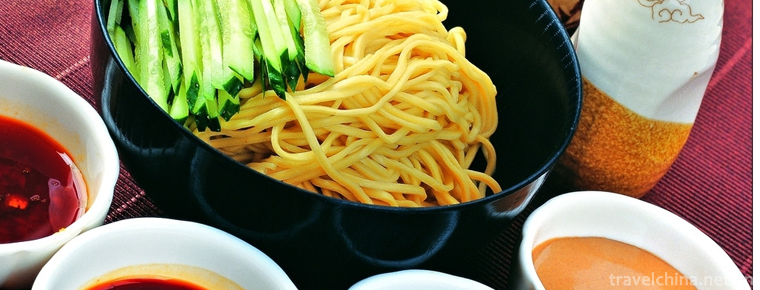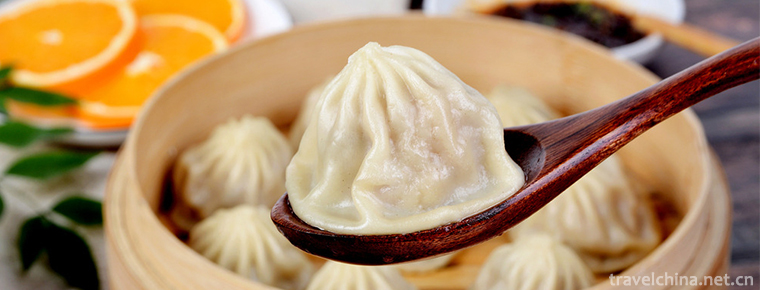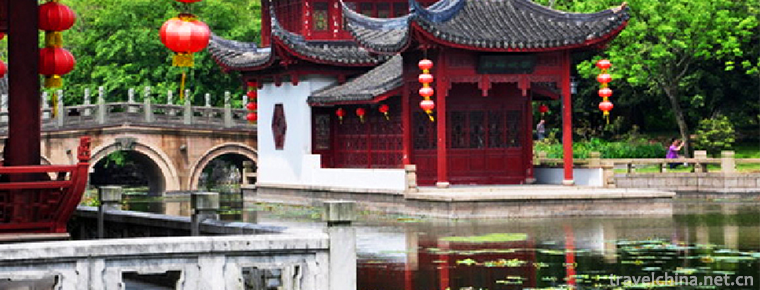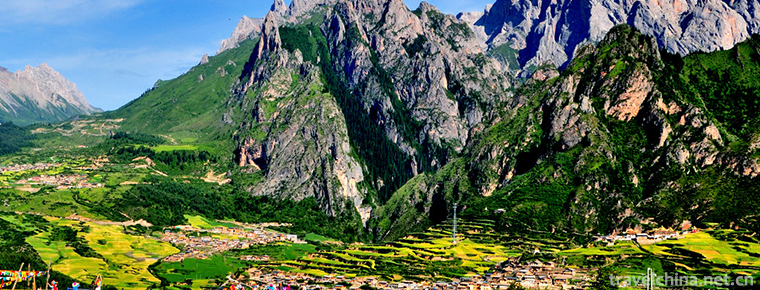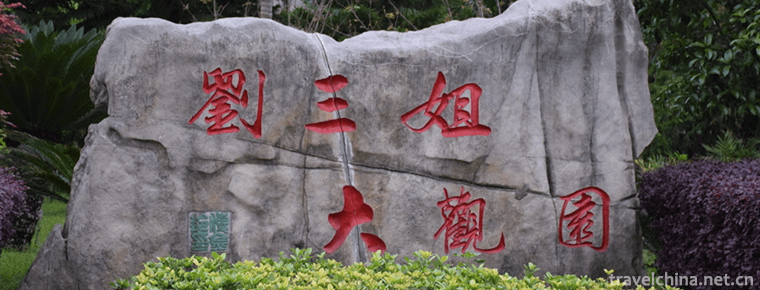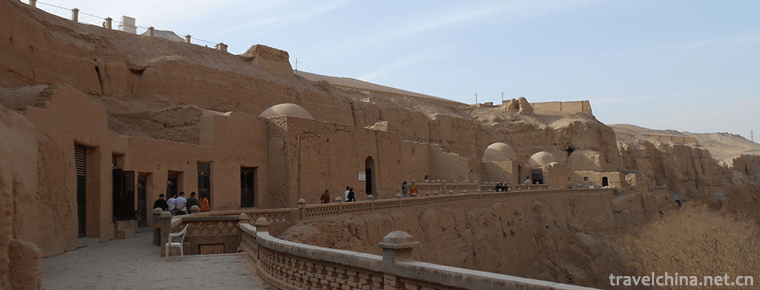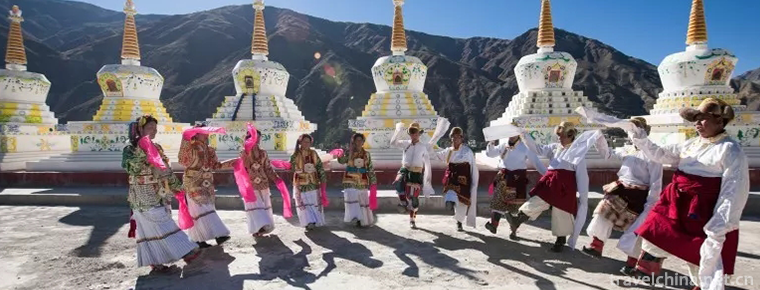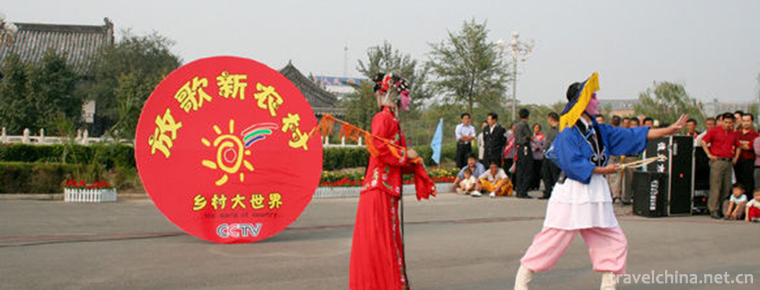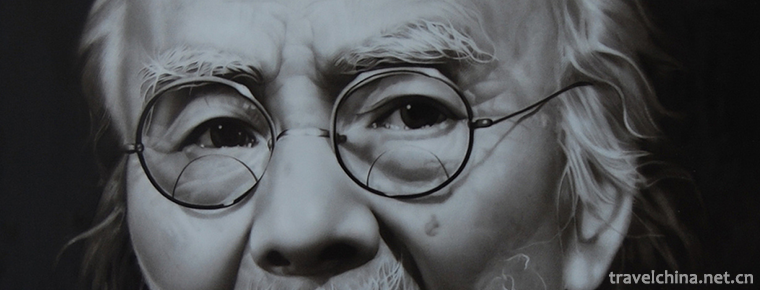Cross stitch
Cross stitch
Flower picking, a kind of drawing work, also refers to a needle method of embroidery, Chinese folk traditional handicraft. Also known as "pick weave", "cross embroidery", "cross pick flower". Flower stitching is a highly decorative embroidery process.
On the longitude and latitude of cotton or linen cloth, many small crosses are picked out with colored lines to form various patterns. Usually picked on pillows, tablecloths, clothing, etc., as decoration. Flower picking has a long history in China, and it is very popular in a wide range of areas, especially in China.
In 2006, flower-picking was listed as the first national intangible cultural heritage by the Ministry of Culture.
Historically, Huangmei flower-picking originated in the Tang and Song Dynasties and matured in the late Ming and early Qing Dynasties. Initially, the products were headscarves, garment edges, door curtains, curtain edges, bedside and so on, which were used by rural women to dress up and decorate their rooms. After the liberation of the whole country, Huangmei County Cultural Department organized a survey of Huangmei's flower-picking works by professionals, and collected more than 1,000 works of Ming and Qing dynasties, such as headscarves, waist-wiping, hunting and so on. Mr. Yu Youqing, an expert in Huangmei County's folk culture research, formed a picture-and-text "Yellow Flail Peach Blossom Chronicle". The earliest surviving object of Huangmei flower-picking in ancient times has a history of more than 550 years. In 1958, archaeologists set up a 41-year-old tomb in Jiajing, Ming Dynasty, in Shanfa, the southern part of Huangmei County on the Yangtze River. The woman in the tomb, a square towel on the head of the corpse, had yellow plum flower picking on it. Because of the age of decay, this precious headscarf could not be preserved at last. But Yu Shaoqing, the cadre of Huangmei County Cultural Museum, took photographs at that time. The photos have been kept in the County Cultural Museum for more than ten years. Unfortunately, they were copied by the Red Guards during the Cultural Revolution.
From the analysis of the history of Huangmei flower-picking imparted by generations of Huangmei flower-picking art population, the origin of Huangmei flower-picking is closely related to the abundant cotton in the alluvial plain of the Yangtze River in the south of Huangmei. Today, Huangmei is an important commodity cotton production base in China. It is known as Baili Cotton Township. Its cotton has a long history. Because of the large cotton output and good cotton quality (long fibers), women in Huangmeimei Township spin cotton yarn self-woven on a local loom. This kind of cloth is called big cloth and dyed green cloth is called Yuanqing cloth. At first, women cut the cloth into two-foot square scarves and put them on their heads, or visited relatives and friends or went down to work, to shade the sun and wipe sweat. They called them headscarves. Later, when beauty-loving women found that the plate-colored headscarves were not good-looking, they tried to make patterns on them to decorate them, and the pattern-pattern headscarves were much better than the plate-colored ones. It was transplanted to other ornaments. Over time, flower-picking products became popular among Huangmei peasant women.
Variety characteristics
Flower picking is mostly practical. Folk flower picking varieties are mainly: door curtain, curtain, bed edge, quilt cover, purse, headscarf, handkerchief, pillow towel, shoes, cap, belly pocket, mantle, lace and so on.
The main types of export commodities are table cloth, tray, napkin, apron, shirt, cushion, quilt cover, etc.
Folk flower picking mostly takes vivid natural scenery and auspicious patterns as themes, such as Phoenix wearing peony, Shuanglong robbing treasure, lotus (every year) with fish (surplus), carp leaping Longmen, Kirin delivering children, duck playing lotus, welcoming relatives and marrying daughters, Fushou more than three, etc. According to the different requirements of decorative parts of embroidery, embroidery patterns such as tufts, horns, twigs and laces are made.
Various regions and nationalities have their own characteristics because of their different customs and customs.
Pixian and Maowen flower-stitching in Sichuan are simple, elegant and simple, with changeable patterns and needles and strong decoration; Hunan flower-stitching prefers to embroider colorful auspicious patterns on dark blue and black earth cloth.
The Yao nationality in Longhui, Hunan, has a bright, warm and beautiful style; the Yao nationality in Longhui, Hunan, has a simple image, exquisite and delicate flowers with unique style; Hefei and Wangjiang, Anhui, mostly adopt flower-laying and flower-needling methods, which are rigorous and meticulous, and have good workmanship; Shaanxi, which is free and lively, does not stick to one pattern; Beijing, which mostly displays scenic sites and ancient buildings; Wenzhou and Shanghai, where flowers and a few flowers are selected. He pattern is dominant. Folk flower-picking artists with skilled craftsmanship can teach and organize patterns without drawing.
On the basis of traditional techniques, modern flower-picking is constantly innovating. It uses a variety of fiber fabrics as fabrics and Embroiders of cotton, hemp, silk, wool and other textures. It also absorbs the specialties of other embroidery and lace, knitting and patching processes, thus enhancing the artistic expressiveness.
Inheritance Significance
Because of the particularity of national culture and the limitation of living area, Huayao flower-picking has replaced words as an important carrier of recording the national history and culture. While enriching our folk art, it has become an outstanding figure in our world heritage. Huayao's flower-picking decoration has profound meaning, concise and exaggerated image, and at the same time, it is full of vivid and interesting. It shows the rich and colorful life scenes of the minority nationalities and their people's love for nature one by one in the costumes by means of simplified composition and varied flower-picking techniques. Hua Yao's flower-picking combines the simple folk customs and unique natural features, creating a very romantic style of realism. With the rapid development of socialist economy, more and more attention is being paid to national culture, and the protection of World Heritage in China is developing like a teahouse. Huayao flower-stitching has won more and more attention because of its unique form beauty and cultural connotation. At the same time, it has created good conditions for protecting the natural and human environment on which it depends for its survival.
Representatives
Yellow Plum Flower Selection
brief introduction
Huangmei flower-picking, also known as shelf flower and cross flower-picking, is widely spread in Huangmei County, Hubei Province. For a long time, after generation after generation of elaborate works of farm women, this craft is becoming more and more perfect, highlighting its unique artistic expression with bright color combination and exquisite design conception.
Huangmei flower-picking belongs to the category of folk embroidery: pick, fill and embroidery. It is a folk craft that has been widely spread among the people in Huangmei County, Hubei Province for a long time. It has rich contents, various varieties, exquisite patterns, rich colors, strong local style and national characteristics.
Tracing to the source
According to legend, Huangmei flower-picking originated in the Tang and Song Dynasties and matured in the late Ming and early Qing Dynasties. According to the Records of Huangmei County, Huangmei had a very exquisite flower-picking craft as early as the Song Dynasty. In 1958, at the foot of Caishan in Huangmei County, the tomb of Jiajing in Ming Dynasty (1561 A.D.) was excavated. The woman's corpse in the tomb was decorated with a "Fushou Shuangtao" scarf embroidered with colored thread, which can prove that the folk craft of Huangmei flower picking has a history of at least 500 years.
Huangmei flower-picking is called "color-picking" by many domestic experts in folk arts and crafts. Huangmei countryside hundred miles cotton area is more exquisite in colorful flower-stitching, rich in patterns and rich in local characteristics. There is a local proverb saying, "Every woman in Huangmei picks flowers." "Caishan, Xinkai, Kong Long and other places have the most flourishing flower-picking technology. As soon as a girl is sensible, she follows her mother or aunt to do needlework and remains married. Locals call girls who can't pick flowers "smack their hands", which is a shame to girls.
artistic characteristics
Huangmei flower-picking is different from general embroidery, which emphasizes embroidery and flower-picking.
Farmer girls in Tibetan-blue cloth, according to the pattern pattern pattern passed down from generation to generation, with white cotton thread as the ridge skeleton, matched with multi-color silk thread cross-stitch made of a kind of embroidery. Among them, the stitches are "cross embroidery" in the shape of "x", and the stitches are "flat embroidery" in the shape of "one".
The patterns of Huangmei flower selection are different from those of tufted flower, edge flower, filling flower, horn flower and lace. The patterns are quite different. It has a wide range of materials and exquisite conception, such as Tuanhua, which has a rich life and a full life, Longfeng Chengxiang, etc. Edge flower has two dragon opera beads, Eight Immortals crossing the sea, filling flower has turtledove pomegranate, dragon boat race, etc. Horn flower has no definite format, mostly with words, cypress leaves and lotus flowers as the main body, forming a triangular pattern in the four corners; Edge flower is mostly connected by two sides, mostly used as the lace of flower scarves. It is as follows:
Group Flowers: Fengxi Peony, Fushou Shuangtao, Four Seasons Bone Brand Flowers, Carp Leaping Longmen, Longfeng Chengxiang, Carp Chuanlian, Danfeng Chaoyang, Engel Pantao, Domino Playing, Herons and Lotus Playing, Fengchaofeng, Ten Kinds of Brocade, Magpie Pingmei, Four Tigers and Diamond Mountain, Colorful Palace Lantern, etc.
Side Flowers: Giving Girls, Seven Fairies, Seven Girls Giving Children, Tiannu Sanhua, Fulu Shouxi, Erlong Drama Pearl, Double Lions Climbing, Two Tigers Out of Holes, Zhuangyuan Youjie, Yuanmen Chopper, Mu Guiying hanging in command, Women's Range, Dalian Xiang, Taoyuan Ritual, Eight Immortals Crossing the Sea, Marrying Daughters-in-law, Four Phoenixes Loving Flowers, etc.
Flower filling: butterfly opera golden melon, turtledove pomegranate, lotus domino, dragon boat rowing, star anise, vase lotus, lotus copper coin heart, pomegranate, longevity, happiness, eight diagrams flower, fish, birds, people, etc.
Hornflower: Character flower, cypress leaf flower, lotus flower, etc.
Side flowers: multi-purpose words, butterflies, ducks, clouds, wishful lines, silkworm tip (small triangle), jasmine flower bud (long hexagon), dog teeth (serrated), melon seed rice (regular hexagon) and other continuous composition.
Expressions are concise, highly exaggerated and deformed, highly stylized and geometric; the objects depicted are dragons and phoenixes, flowers and birds, humans and beasts, insects and fish, utensils and a small number of words; the contents reflected are auspicious and wealthy marriage, entertainment, opera stories and so on; the selection methods include single-sided selection and double-sided selection, using special techniques to pick out the positive and negative sides of the same pattern; there are nearly 40 varieties, ranging from the large to the quilt side, and so on. Door curtains, as small as incense bags and garters, are part of the articles worn by women and children in their daily lives and bedrooms. There are also female workshops for men, such as pipes, belts, cigarette bags, or love tokens. Huangmei's flower-picking works express people's emotions and ideals through patterns and words. Some patterns and words contain different meanings respectively.
1. Over the years, we have enough food and clothing. In Huangmei flower-picking, "fish" is the homonym of "Yu", which means more than enough. "Carp" is the homonym of "surplus" and implies "more than luck". Some people connect "fish" with "lotus" and take the homonym of "lotus" and "fish", which means more than a year. "Dragon" is a totem worshipped by our ancestors. In the flower-picking of Huangmei, the myth and legend that "dragon" can call the wind and rain implies that the people have conquered nature, and the wind and rain are smooth and harvest.
2. Love is faithful and marriage is perfect. In addition to other folk arts with the "mandarin duck" implies that husband and wife will never be separated, love each other, Huangmei flower stitching also has many unique implied manifestations. If carp, magpie and Heron are regarded as males, phoenix, lotus and plum are regarded as females, and they are combined into "dragon and Phoenix are auspicious", "carp wear lotus", "magpie climb plum", "heron play lotus" and so on, which implies the love between husband and wife, the beautiful life and the bright future of the old couple. In Huangmei's flower-picking, some works express their desire for a happy marriage and family with direct narrative techniques. For example, "Welcome to relatives" picture, more than 20 figures in four rows with "S", the front row for Huagai, red lights, colored flags, followed by three sedan chairs, according to Huangmei custom first as matchmaker, second as bride, third as groom, behind the temple is the band of marriage and playing, from the fierce atmosphere of gongs and drums, firecrackers, the image implies the people's sweet love, marriage. Wishing you a happy marriage and a happy family.
3. Exorcise evil spirits and make them rich and prosperous. In Huangmei flower pattern, a large number of animals revered and revered by people, such as dragons, phoenixes, lions and tigers, are used, implying disease relief, peace and auspiciousness, wealth and prosperity, family prosperity, etc. If the lion is the king of beasts, it has the supreme power to reduce evil spirits, tigers can survive and have vigorous vitality, dragons are totems of the Chinese nation, can call the wind and rain, Phoenix represents auspiciousness, and in ancient times there was the saying that "phoenix does not fall without treasure". There are also many plants with auspicious meanings, such as lotus, which implies many children, and Tilian, which symbolizes the harmony between husband and wife and the happiness of marriage.
The main raw material of Huangmei flower picking is local machine cloth, also known as big cloth. This kind of cloth is dyed blue as the base. The artist relies on a needle and a thread {seven colors} to pick and embroider various patterns alternately on it. In terms of pattern composition, besides upper and lower symmetry, left and right symmetry (such as hornflower, butterfly, golden melon, etc.), rotation (such as heron, lotus, phoenix, phoenix, etc.), centripetal (such as Fushou double peach, cypress flower, etc.), radiation (such as anise lotus, anise flower, etc.), there are many patterns expressing certain plots. Such as Seven Girls Giving Children, Chung Yuan You Street, Mu Guiying hanging in command, Taoyuan Sanjie and so on. This kind of pattern does not obey the rules, there are no certain laws and regulations. It relies on art to increase or decrease the number of needles at will, but it does not depart from the unique formula formed by folk nature, and produces a unique composition effect. A picture is a story, and a picture is a history. This rare and unique artistic expression originated from Huangmei because Huangmei is a hometown of operas.
Huangmei flower-picking is a kind of embroidery with colored thread. It uses needles to make colorful silk threads on the cross-mesh of the warp and weft lines of the undercloth to form a pattern with brilliant color and strong three-dimensional sense.
In color processing, except for a few monochrome embroidery, it is basically embroidered with color thread. Yellow plum flower-picking is based on green and coarse cloth, with white as the basic framework, with bright red, peach red, water red, light red as the main color, with orange and light yellow, forming the warm tone of the work. In the meantime, some cold colors such as lake blue and plain green are embellished to make the whole work beautiful but not frivolous, warm but not dry, and harmonious in the complexity. It not only strengthens the color contrast, but also enriches the level of change. In addition, the works mostly use deep and thick blue as background color, fine craftsmanship and simple design, which make the whole works gorgeous and solemn, colorful and fresh, calm and smooth, giving people a feeling of elegance, simplicity and holiness.
Huang Mei won the gold medal of Panama World Exposition in 1938, the medal and prize of Polish Art Exhibition in 1954 and the commemorative medal of Polish Socialist Countries'Folk Art Exhibition, the first prize of Hubei Folk Art Exhibition in 1956, and Premier Zhou Enlai personally selected the Hubei Hall of the People's Great Hall for decoration among many Hubei crafts in 1959. Since the reform and opening up, Huangmei's flower-picking has been touring abroad for many times as a representative work of crafts in the country and Hubei region, and has been highly praised by the audience, customers and experts and scholars from all walks of life. Huangmei's flower-picking has been praised as "silent lyric, three-dimensional Chinese painting". "In 1990, he was awarded the silver prize of the First National Light Industry Exposition"; in 1991, he was awarded the gold prize of the Second Beijing International Exposition; in 2006, he was listed as the first national intangible cultural heritage by the Ministry of Culture; At the same time, another intangible cultural heritage "Huangmei Opera" declared by Huangmei County was also selected at the national level, making Huangmei County the only two non-material cultural heritage in the country at that time. County on the list of qualitative cultural heritage.
Shi Jiumei, a flower-picking artist in Xinkai Town, Huangmei County, was listed as the first successor of Huangmei flower-picking project, a national intangible cultural heritage. In mid-August 2010, the protection of geographical indication products declared by Huangmei Huahua passed the expert review smoothly, which will be approved by the State Administration of Quality Supervision and Inspection. At the same time, the county quality and Technical Supervision Bureau and the Huangmei Haixin Vocational and Technical Training School jointly drafted the local standard of Huangmei flower picking, Technical Specification for Huangmei flower picking production, which provides a basis for organizing production and sales acceptance.
Flower Selection of Longhui Huayao
brief introduction
Huayao is located in Hu-shaped Yao nationality township, Xiaoshajiang town, Dashuitian Township and Matang Mountain Township in northern Longhui, with a total of more than 7,000 people.
Huayao's beautiful flower-picking is a treasure of Chinese traditional culture and a masterpiece of folk arts and crafts. Huayao flower-picking is a unique handicraft among Yao women in Longhui County, Hunan Province. The Longhui Yao people are known as "Huayao" because of the beautiful flower-picking decoration on women's skirts.
Tracing to the source
Huayao flower-picking has a long history. Before the Han Dynasty, Huayao flower-picking had risen. According to the Eastern Han Dynasty Yingxian's General Meaning of Customs, the ancestors of Huayao "accumulated achievements in wood skin, dyed with grass, good five-color clothes". Wei Zheng of the Tang Dynasty recorded in Sui Shu that "there are various kinds of meadows in Changsha County, named Moyao", "women's blue shirts, striped skirts, all without shoes and shoes". This description is exactly the same as today's Longhui Huayao women's dress: intertwined with colorful flower-picked headscarves, blue round neckwear, waist-tied flower-picked ribbon, color flower-picked skirt under, legs tied flower-picked tie. In their headscarves, collars, skirts, leggings, children's straps and skirts and other places are pick flowers. In addition to the back of the skirt, other places are generally embroidered. On the back of the skirt, various patterns are picked out with white lines on the Tibetan-blue straight face cloth. Because the size of the rear skirt is large, the size is about 100 centimeters long, and the height is 50-60 centimeters. The theme of the cross stitch pattern is the richest, the theme is the most prominent, and the cultural awareness is the most obvious. It is the essence of Longhui flower Yao's cross stitch.
Huayao has no written language, and flower-picking has become an important carrier to record the history and culture of the nation. It has profound cultural connotations. It is listed as a treasure collection by the Chinese Art Museum and National Museum. Mr. Shen Congwen, a famous Chinese writer, calls it "the first-class flower-picking in the world". In 1994, Huayao flower-picking exhibition held by the Ministry of Culture won the bronze prize, and in 2003, it won the gold medal of "the first Chinese cultural relics imitation and folk crafts exhibition". Therefore, the Yao nationality township of Huxiangshan in Longhui County was named "the hometown of culture and art" by the Hunan Provincial Department of Culture.
artistic characteristics
Huayao picks flowers from a wide range of materials, rich in content, diverse forms, there are thousands of kinds. The subject matter of the main pattern can be divided into four categories: first, animals, snakes, dragons, birds, eagles, tigers and lions are the most common. The second category is plants, mainly flowers, plants and trees; the third is historical stories and historical figures, mainly showing the historical stories of Yao ancestors resisting foreign aggression; the fourth category is daily life, such as reflecting the traditional customs of Huayao "love song" and "marriage through dance".
The main pattern of Huayao flower picking is made of flat, thick and dark blue cloth, white and thick thread, and the pattern is ancient and rough. The cross of warp and weft yarns of cloth is in the shape of "ten" as the "coordinates" and the diagonal insertion needle is in the shape of "x", which is commonly called "cross flower" or "one" shape. Basically geometric figure, its basic form is several parallel long lines juxtaposed, among which there are several squares formed by adding horizontal lines between two parallel long lines, some are folded into "U" shape, some are single-line or double-line diamond shape, some are small squares with large squares set in "back" shape, some are made into a network of multiple straight lines, and so on. When there is a large gap between the various forms, pick small flowers to fill it. The common florets are *,, 10, mouth, gyrus, V, small dots, vortices, etc.
There are many kinds of flower patterns of Huayao, the most commonly used patterns are: sun pattern, ten thousand-character pattern, lantern pattern (also known as pumpkin pattern), copper money pattern, peony pattern, fern leaf pattern, Gouge vine and so on. There is also a flower-like pattern known as "Cheer Yow" (Hualuyan in Chinese), which imitates a biological fungus growing on rocks. It is said that the pattern of this kind of flowery rock is especially exposed every year when it becomes good. Huayao girls regard this beautiful and auspicious pattern as a basic pattern of flower selection.
Huayao flower-picking process is very delicate, the length of the line needle and the elasticity of the thread should be the same. Needles and needles are matched in dense places, without any background color, but only one flower and several lines in concise places. On both sides of the main pattern, it is matched with colorful decorations embroidered with red, yellow and green silk threads. The whole flower-picking picture is clear in black and white, dense and compact, dynamic and static, and the color contrast is distinct. "Look at the color from a distance and look at the flower from a near perspective", which has a strong visual impact.
Huayao flower selection has its own unique style in technology. It is quite different from machine embroidery and Hunan embroidery. Without describing the design or making embroidery frames with moulds, with the skillful hands and skillful skills of the flower-picking lady, they operate freely along the longitude and latitude lines of the earth cloth with their own mental composition and understanding of beauty. From the age of seven or eight, Huayao girl has been learning flower-picking by oral instruction from her elders. It takes several years for her to master the basic skills of flower-picking. Every girl carries embroidery needles and threads with her, and carries out flower picking during the interval of labor. Crowds of flower picking girls can be seen everywhere in front of the hanging-feet building, on the stone beside the stream and in the ancient woods. Someone has counted that there are more than 300,000 stitches for a barrel skirt, which takes more than 180 working days to complete.
Many historical figures and events have vivid images in Huayao's flower-picking. Such as "crossing the sea by dragon", "Panwang Shengdian", "Langqiu (Yao language, meaning the leader) to resist the enemy" and so on. Panwang in "Crossing the Sea by Dragon" wears a three-pointed divine crown with a glorious grace and rides on the dragon's back. The proud dragon holds his head high, drives clouds and mists, and calls for fresh air. The crown is elegant, and the dragons congratulate each other. The sun above Panwang's head and the birds flying around Jiaolong's head make the whole picture a sense of flying and flowing. It is very vivid and has a deep historical connotation. "Pan Wang Sheng Dian" in Pan Wang head wearing Royal clothes, sitting in the hall. Palace is a typical Yao architecture with unique style. The word "longevity" in the horizontal script of Qiaoyan Palace implies permanence. Shouzi embroidered rich and precious flowers around, flags planted on both sides, fluttering in the wind. Panwang's head is embroidered with bamboo on both sides and Shuanglong on both sides of the palace pillar. The whole design is naive and clumsy, expressing the good will of Yao ancestors who were often killed and living in poverty to pray for peace, auspiciousness and prosperity. "Longqiu resists the enemy" is a realistic way to directly show the Yao soldiers guarding their homes and bravely killing the enemy. Longqiu was riding on a horse, with a crown on his head, armour and arrows in his hand. Under the horse there was the head of the offender. This pattern is not only a record of history, but also a eulogy of heroes, as well as a reverence for ancestors.
Huayao flower-picking has a deep cultural connotation. The religious beliefs, unique festivals and marriage customs of the Huayao nationality are fully reflected in many flower-picking activities with the theme of animals and daily life of the Huayao nationality. Among a large number of animal-themed Huayao flower-picking, snake patterns are the most abundant, including coiled snake, cross-body snake, head-up cocktail snake, tailless double-headed snake, snake-entangled totem snake and so on, up to hundreds of kinds. And snakes have different shapes, full of fantastic ideas. For example, Xunzi snake, Bishi snake, Tuxin snake, group snake gathering, double snake play beads and so on, Huayao flower-picking has given spirituality to these snakes. This is because Huayao has long lived in the dense mountains and forests, hot and humid environment with many snakes, and is very familiar with the habits of snakes. Snakes also have the ability of swimming, climbing trees, drilling, longevity and hunger resistance, which were beyond the reach of early humans. Therefore, they are regarded as spiritual objects and become totems of Huayao tribe, similar to the Han people's worship of dragons.
"Falling in love with songs" and "getting married through dancing" are the treasures of Huayao's flower-picking. They show the unique customs of Huayao vividly and vividly with their magnificent scenes and numerous characters. Unfortunately, due to the difficulty of these flower-picking techniques, they are on the verge of being lost. Only a few works remain, which is rare.
Huayao's flower-picking, deformed and spiritual portrayal, concise and vivid, with less and more, distinct theme and rich decorative. Bold exaggeration in shape, bold choice, using the combination of realism and Romanticism to extract from nature, processing and creating a true and spiritual image, reflecting rich charm, producing unreasonable, harmonious, beautiful and weird taste, showing a simple aesthetic feeling. When Yao women embroider animals, they often embroider small animals and flowers in the body of animals, such as flowers and tigers in the body of a female tiger. Or why do you pick flowers like this? You will get a funny and plain answer: tigers have to bear cubs and eat, so that the embroidered tiger is a living tiger. This way of thinking about anatomy is bold and romantic.
Huayao flower-picking makes wonderful artistic treatment and combination of different visual images, and the composition is balanced or symmetrical. For example, it is neat and generous to use the pattern combination of trees, flowers and plants and make the main pattern according to the geometric arrangement; sometimes dozens of patterns are selected in an embroidery piece to form the main pattern freely and irregularly, or to hide flowers in the flowers, or to combine freely several birds, insects, etc. into flowers; or several birds have a total of wings. Such delicate conception makes the whole pattern full and rich, forms a lively atmosphere, fully reveals the theme, and obtains good decorative effect.
Huayao flower-picking not only emphasizes practicality, but also pursues beautiful tone decoration. "Looking at flowers from a distance and looking at them from a close perspective", they like to use strong stimulating colors, bright red headdresses (Yao called "Patti Dian") and headscarves (Yao called "Xiaotong"), dark blue coats (summer dresses are snow-white), colorful belts (Yao called "special file"), gray-white uniform skirts (Yao called "Dun") with two red and gorgeous skirts (Yao called "mending") at the front. Ink Leggings (Yao called "buckle drying") make the whole Costume Black and white, cool and warm coordination, bright and dazzling. It makes people feel that Huayao women dress up all the colors symmetrically on themselves. If headdresses, hats and dresses are mainly grey-white and dim in color, they are dresses for filial piety.
Wangjiang Flower Selection
brief introduction
Wangjiang flower-picking is a kind of family handicraft handicraft handicraft spread in Wangjiang County. It originated in the Tang Dynasty and made sacrificial offerings with hemp and hair as materials. In the late Tang Dynasty, local cotton was used as raw material to produce decorative articles for clothing and household utensils, and gradually formed the handicraft skills that every household woman must master.
Wangjiang stitching is loved by Wangjiang people for its exquisite composition, interesting pros and cons, rich connotation, beautiful and practical. It has been handed down from generation to generation and has remained so far.
Wangjiang picking flower gradually forms four kinds of needling techniques, such as picking, drilling, swimming and weaving, in the process of inheritance and development. Composition elements are drawn from life, in addition to various geometric figures, the common plants are vines, flowers and fruits, stems and leaves: such as plum, bamboo leaves, peony, golden melon, lotus, chrysanthemum, pomegranate, cypress, gardenia and so on; the common animals are butterflies, bees, peacocks, hibiscus, Mandarin ducks, pine cranes and the zodiac. Other characters such as Taiji, Bagua, Palace Lamp, Sun, Moon, Star, Cloud, Mountain, Water, Boat, Ship and Ruyi, Yuan Bao, Money, Shou Zi, Fu Zi, Happy Zi, Jiyang, Ping An, etc. Other activities include life, production, games, festivities, totems, religions and so on.
Wangjiang picks three parts to inherit and seven points to create. There are rules, rules, and changes. Hieroglyphs and meanings, individually or in combination, flower sets and so on, manifestations are diverse. Wangjiang flower-picking products are exquisite and elegant in color. They have been selected into Beijing three times and become outstanding art ornaments in the Great Hall of the People. He has won many awards in various fairs and expositions, and has a long reputation.
Wangjiang flower-picking has profound cultural connotations. It integrates artistry and practicality. It is the precious spiritual wealth of Wangjiang people.
Flower Selection of Huayao in Xupu
brief introduction
Huayao is a branch of the Yao nationality, with a population of more than 12,000. It lives in the vicinity of Xuepu and Longhui at the northern foot of Xuefeng Shandong Province, in the mountains of 1,300 meters above sea level. Flower-picking is a folk craft handed down from generation to generation by Huayao people. When making, Huayao women take indigo earth cloth as the carrier and use stitching needle to pick white or colored yarn into it by several stitches. Huayao women learn to pick flowers from elementary school to make lifelong clothes.
Huayao flower patterns, divided into color and black-and-white two categories, mostly continuous patterns and symmetrical patterns, themes are common birds and animals in mountainous areas, trees and flowers, stars, mountains, rivers and mountains, as well as Yao ethnic totems, myths and stories. It is rich in imagination, ingenious in conception and profound in connotation. When the bride gets married, she should put the wedding dress made of pick-up flowers on a large bamboo basket woven by her mother and sister-in-law. The orange-red tray on the bride's head symbolizes the sun; the headband in the middle of the tray symbolizes the moon; and the ornaments around it symbolize the stars. Six pairs of red and twelve pairs of yellow stripes on the skirt represent the Yangtze River and the Yellow River in the distance, while various small patterns represent rivers, mountains, countryside and villages, respectively. The Huayao people show the spiritual world of an ancient nation with their skillful flower-picking. With the development of social economy, Huayao flower-picking has become a tourist product to enter the market.
Luojing Cross
brief introduction
The wide spread of Huangdaopo cotton textile technology has formed the custom of widely planting cotton and popular textiles in the south of the Yangtze River and Luojing Town; compared with the silk fabrics and embroidery used by the high-ranking officials, local fabric stitching is more in line with the extensive dress requirements of the civilian people: folk clothing has long been matched with pattern decoration, with the color line "swimming flowers", followed by cloth "trend flow" to pick the cross to form patterns. It is "Luojing Cross Flower Selection". According to legend, it should be the late Ming and early Qing Dynasty, which has a history of at least 300 years.
Luo Jing cross-stitch flowers, which are carried over clothes or handkerchiefs made of earth cloth, are used as decorations of "pocket headscarf", "tie hook", "belly pocket", "cloth skirt" and "shoe upper", especially "pocket headscarf" and "tie body hook". In Jiangnan Shuixiang, there is a tendency that no pick flowers can not be used. According to field survey records, the background color of "hoods and handkerchiefs" is different. Older women usually use dark earth cloth to "hoods". Girls and women use white, new daughters-in-law must use green, and the patterns on them are black. The pattern of "tie hooks" is picked at the two sides of the top, and the line of flower picking is not rigid. In life, these two things are also girlfriend's wedding preparations, which are used for "pressing the bottom of the box" and to show the degree of "cleverness" of the bride. Add "tie hook" or "still painful" gifts, so-called "still painful" is the custom of respecting the elders who meet the bride. In embroidery production, Luojing cross-stitching seems simple, but the requirements are quite high. The basic needling methods include "running needle", "twisting needle", "snake shelling" and so on. After a long period of development, the pattern of Luojing cross-stitching has formed a unique expression formula. It has dozens of independent patterns, such as "butterfly flower", "bird flower", "lotus flower", "waist diamond flower", "cypress branch flower", "octagonal flower", "a grass", "climbing vine grass" and so on. The elements of these independent patterns form a rich and colorful overall pattern. Cross-stitching pictures have rich cultural connotations, including natural scenery, traditional patterns of praying for disaster relief, legendary stories, and the expression of the will of the heart. Folk women's small skills are neither desirable nor precious, nor can they ascend the hall of elegance. Therefore, there is no written record in the records of the local history; after widespread dissemination, it is still everywhere on the top of the head and the foot. Therefore, we can not deny the brilliant tradition woven by skillful women, and can not erase the wisdom creation of generations of farm women. Luojing cross-stitching, which is good at local culture, is rare in Shanghai, an international metropolis. It is precious that the declaring party has collected dozens of "flower-picking" objects and found more than ten inheritors who can weave good embroidery. A few of them can demonstrate and teach skills, have run classes and raise funds to hold art exhibitions.
Xinghua Blue Cloth Flower Selection
In Xinghua, a girl's family learned the traditional custom of needle and thread from her mother, grandmother, aunt, aunt and so on as soon as she was sensible. Once the needle and thread are mastered, it can't be thrown away, and the girl should be married all the time. As a result, the last sewing job a girl does at her mother's house is mostly her own wedding dress. Among the numerous needlework, the blue cloth stitching is one of the important skills. If a girl's family can't pick flowers with green cloth, it's naturally inferior to others. If she marries her mother-in-law, there seems to be a shortage in front of her mother-in-law, and her head can't be raised so high.
From the technical point of view, it is different from general embroidery. Generally speaking, embroidery pays attention to "embroidery", while blue cloth stitching pays attention to "picking". Most of the girls in the literary boudoir weave their own Tibetan-blue cloth and carry out flower-picking according to the patterns handed down from generation to generation. The stitching method of flower picking is "crossing" method. Among them, the stitches are "cross embroidery" and the stitches are "one" and the stitches are flat embroidery. Blue cloth flower picking method, there are two kinds of picking, one-sided picking and two-sided picking. It goes without saying that one-sided selection is much simpler than two-sided selection. Double-sided picking is to use special stitching method to pick out the same pattern on both sides.
Blue cloth flower-picking, including tufts, edges, horns, fillers and so on, has nearly 40 kinds of patterns. These patterns are embroidered on quilts, door curtains, curtains and other large items, while women's articles such as sachets, garters, scarves and aprons are more common. Of course, such a unique flower-picking technique, its supplies will not exclude men. Embroidery designs can be embroidered, such as coverings, belts and cigarette bags. Among them, the most popular embroidery for young girls is to give love tokens to their loved ones. Even a handkerchief should be embroidered with a lotus to express one's feelings.
As mentioned earlier, most of the cloth used for blue fabric stitching is self-woven, commonly known as "home machine cloth". The machine cloth dyed with flowers is also called "big cloth". This kind of cloth is dyed blue as the base, the flower-picker relies on a needle and a thread in his hand to alternately embroider on the "big cloth" and Embroiders various patterns. The needle used here is no different from the usual embroidery needle. The line used is white. The flower picker uses a needle to pick the white thread on the mesh where the longitude and latitude of the "big cloth" intersect to form a strong sense of three-dimensional. When picking flowers, the length of the needle and the tightness of the thread must be the same. Choose embroidery to the dense place, pay attention to the needle and needle matching, do not reveal the background color. In a simple province, there may be only one flower and a few lines. Needs to be in place with a needle. The lines are smooth and must not be muddy and watery. Blue cloth stitching is often on both sides of the main pattern, accompanied by some decorative foil. These decorations are mostly made of red, yellow, green, blue, blue, purple and orange silk threads, which enrich the whole embroidery effect. Let embroidery colorful, contrast distinct, dense and compact, dynamic and static appropriate, showing a strong visual impact.
Xinghua blue cloth flower-picking, in the composition and shape, reflects the bold pursuit of folk artists, refines and summarizes from daily life, and then carries out exaggeration after bold choices, so that the whole embroidery is concise and vivid, full of decorative. There are not only ancient bronze decoration, but also rough Qin bricks and Han tiles; both elegant Song porcelain, and paper-cut simple; both the delicate embroidery of Su, and the beauty of brocade. Tibetan blue cloth and white thread create so many colors on the "big cloth", so simple and elegant, full of specific regional customs and folk flavor.
This special folk skill shows the wisdom crystallization created by Xinghua women's combination of a pair of wisdom eyes and a pair of skillful hands. However, with the change of living environment, the change of times and society, which originated in Tang and Song Dynasties and matured in the ancient crafts of Ming and Qing Dynasties, is now on the verge of endangerment due to the lack of materials and production difficulties, and needs to be protected and rescued.


-
Cold Noodles with Sesame Sauce
Cold Noodles with Sesame Sauce are also called cold noodles.
Views: 133 Time 2018-10-12 -
Kaifeng soup dumplings
Kaifeng filling soup bag is one of the famous foods in Kaifeng because of its unique flavor. The soup is thin and white like Jingdezhen ceramics. It has a transparent feeling.
Views: 202 Time 2018-11-26 -
The Grand View Garden Area of Shanghai
Shanghai Grand View Garden is located at 701 Qingshang Highway, Qingpu District, Shanghai. It is situated on the west side of Dianshan Lake, 65 kilometers away from downtown Shanghai..
Views: 150 Time 2018-12-19 -
Liu Sanjie s Grand View Garden
Liu Sanjie Grand View Garden, formerly known as Guilin Liu Sanjie Landscape Garden, is located on the Peach Blossom River in Guilin City, Guangxi Zhuang Autonomous Region. It covers an area of more th.
Views: 144 Time 2018-12-26 -
Bezeklik Thousand Buddha Caves
The Qianfo Cave in Bozikrik is located on the cliff on the West Bank of the Wood Trench, 45 kilometers east of Turpan City, Xinjiang. There are 83 caves and 57 caves.
Views: 132 Time 2019-01-02 -
Shandong Zhisheng Tangquan Tourist Resort
Shandong Zhisheng Tangquan Tourist Resort is located in Linyi City, Shandong Province. It is invested and constructed by Shandong Chenshi Home Estate Co., Ltd..
Views: 420 Time 2019-02-08 -
De rong xue qiang
Derong Xueqiang is a folk dance popular in Waka Township, Derong County, Ganzi Prefecture. Its movements are strong, simple and generous, its next steps are strong and its feet are crisp.
Views: 196 Time 2019-04-26 -
Hengshui painting
Hengshui Inner Painting, a traditional folk art in Hengshui, Hebei Province, is one of the national intangible cultural heritage..
Views: 208 Time 2019-05-03 -
Yigou gou
"Yigou" is a traditional drama in Gaotang area of Shandong Province and one of the national intangible cultural heritages..
Views: 127 Time 2019-07-12 -
Qi baishi
Qi Baishi (January 1, 1864 - September 16, 1957), formerly known as Zhi Zhi, the word Wei Qing, No. Lanting Pavilion, later renamed Huang, the word is on the edge, the number of Bai Shi, white stone m.
Views: 254 Time 2019-09-04 -
Deyang Deyang transportation
By the end of 2018, the total mileage of Deyang highway was 8345.2 km, including 7861.0 km of grade highway, accounting for 94.2% of total highway mileage; 655.8 km of high-grade highway and 205.5 km of expressway. The railway operating .
Views: 239 Time 2020-12-14
